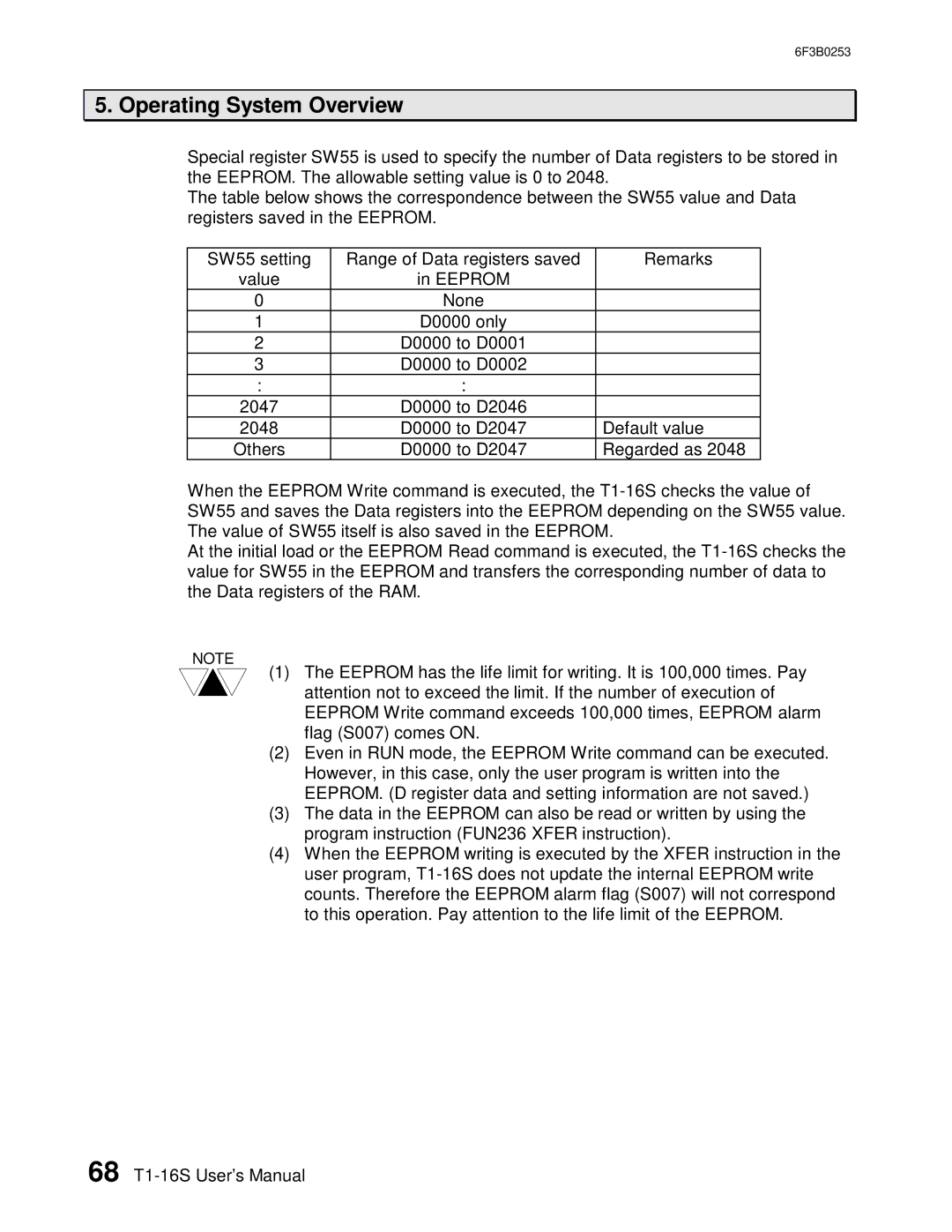
6F3B0253
5. Operating System Overview
Special register SW55 is used to specify the number of Data registers to be stored in the EEPROM. The allowable setting value is 0 to 2048.
The table below shows the correspondence between the SW55 value and Data registers saved in the EEPROM.
SW55 setting | Range of Data registers saved | Remarks |
value | in EEPROM |
|
0 | None |
|
1 | D0000 only |
|
2 | D0000 to D0001 |
|
3 | D0000 to D0002 |
|
: | : |
|
2047 | D0000 to D2046 |
|
2048 | D0000 to D2047 | Default value |
Others | D0000 to D2047 | Regarded as 2048 |
When the EEPROM Write command is executed, the
At the initial load or the EEPROM Read command is executed, the
NOTE
(1)The EEPROM has the life limit for writing. It is 100,000 times. Pay attention not to exceed the limit. If the number of execution of EEPROM Write command exceeds 100,000 times, EEPROM alarm flag (S007) comes ON.
(2)Even in RUN mode, the EEPROM Write command can be executed. However, in this case, only the user program is written into the EEPROM. (D register data and setting information are not saved.)
(3)The data in the EEPROM can also be read or written by using the program instruction (FUN236 XFER instruction).
(4)When the EEPROM writing is executed by the XFER instruction in the user program,
68
